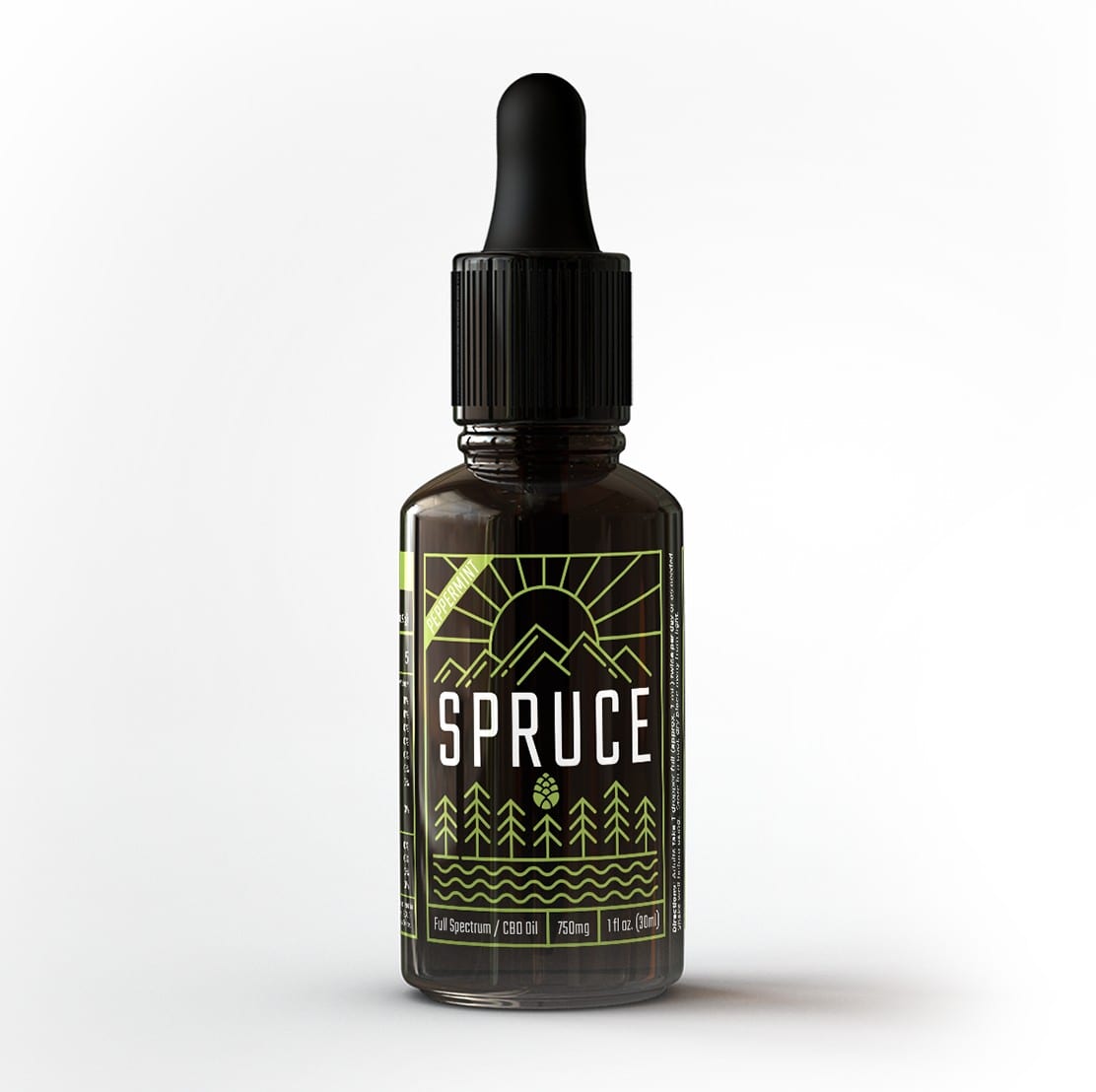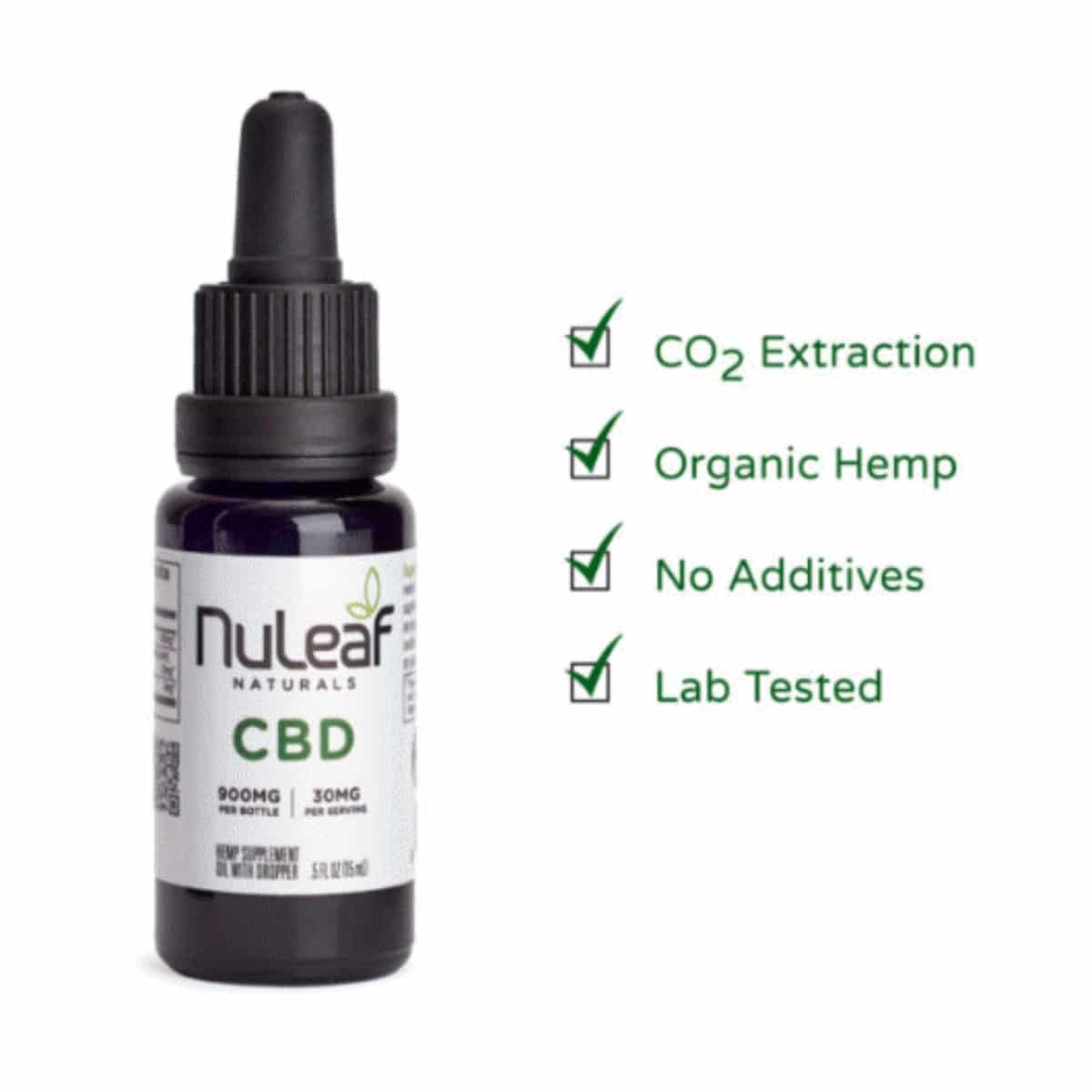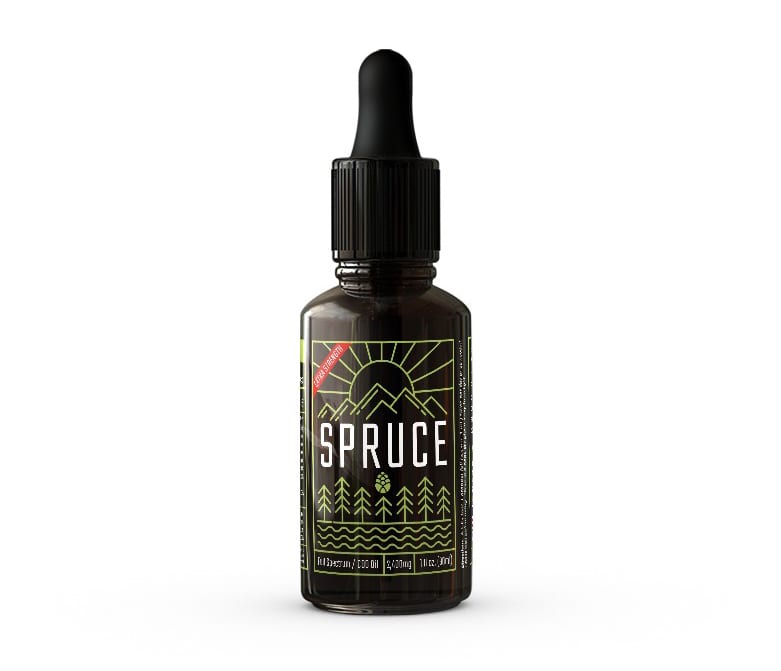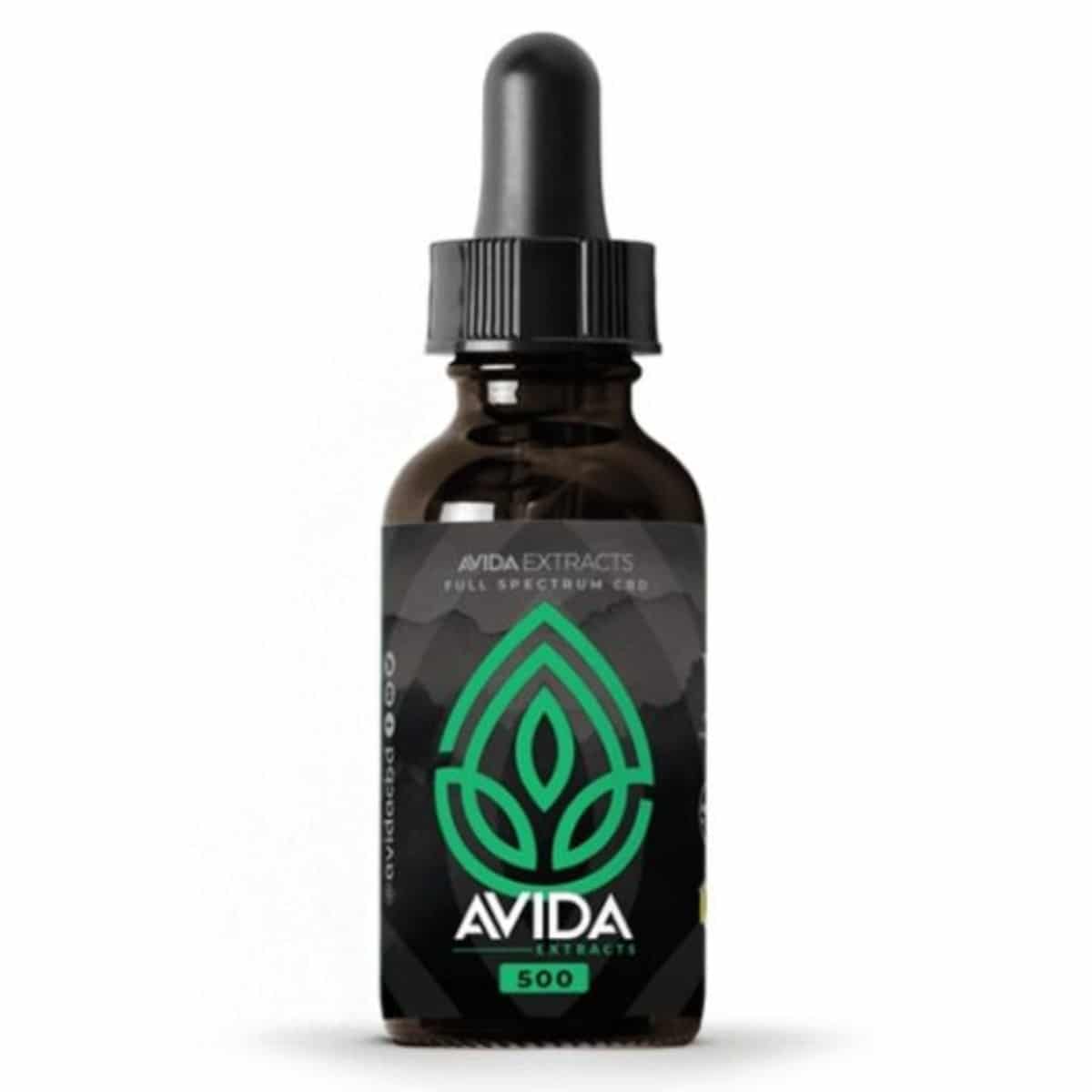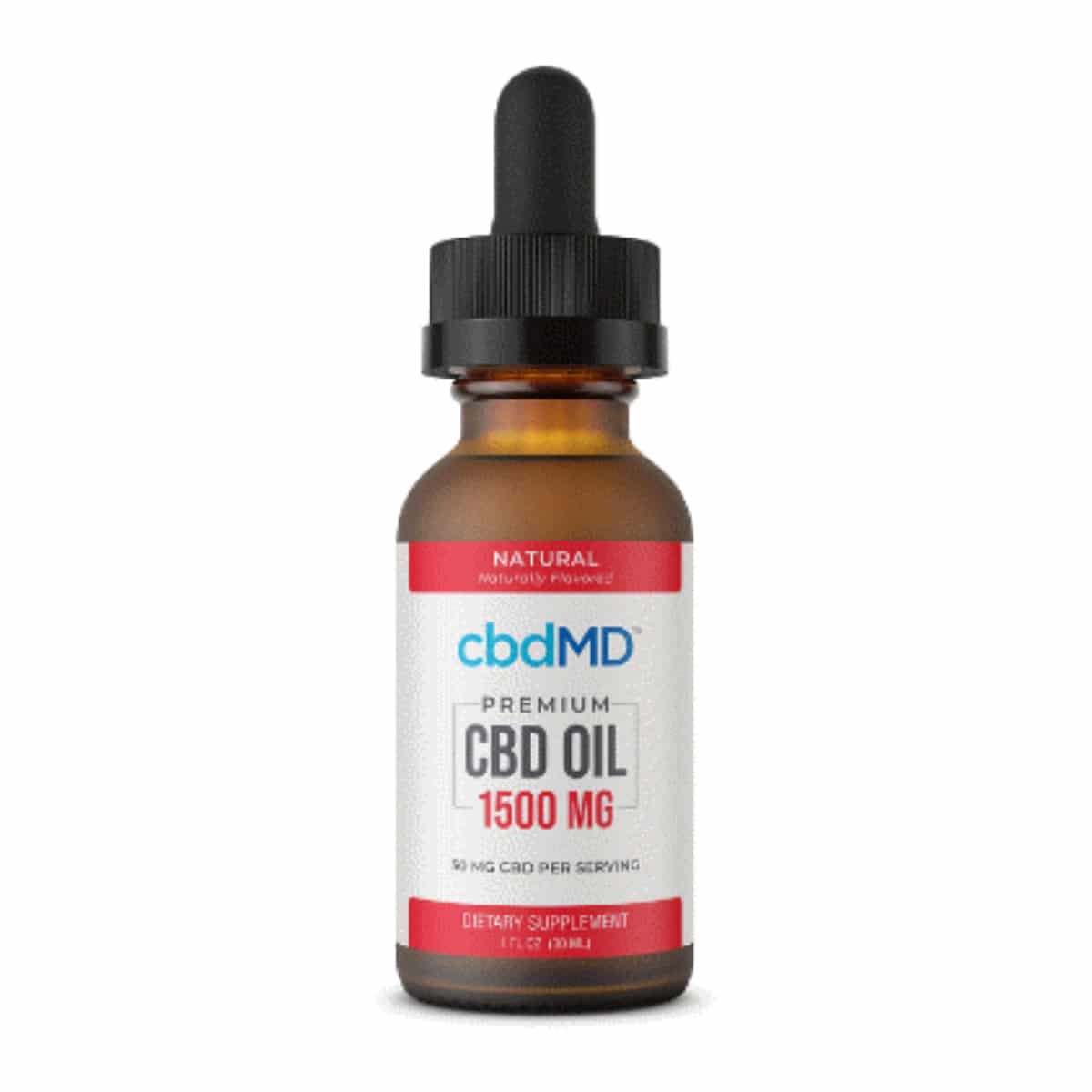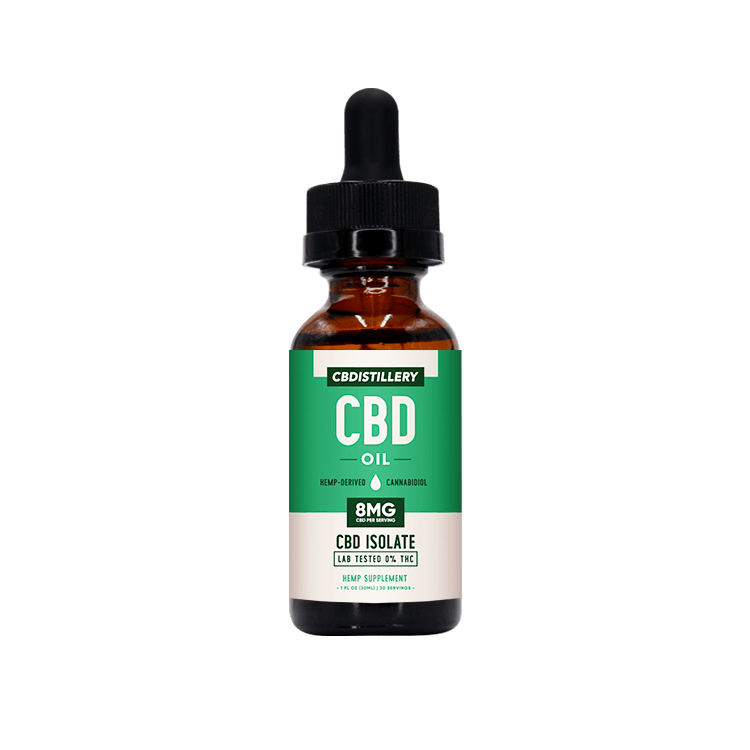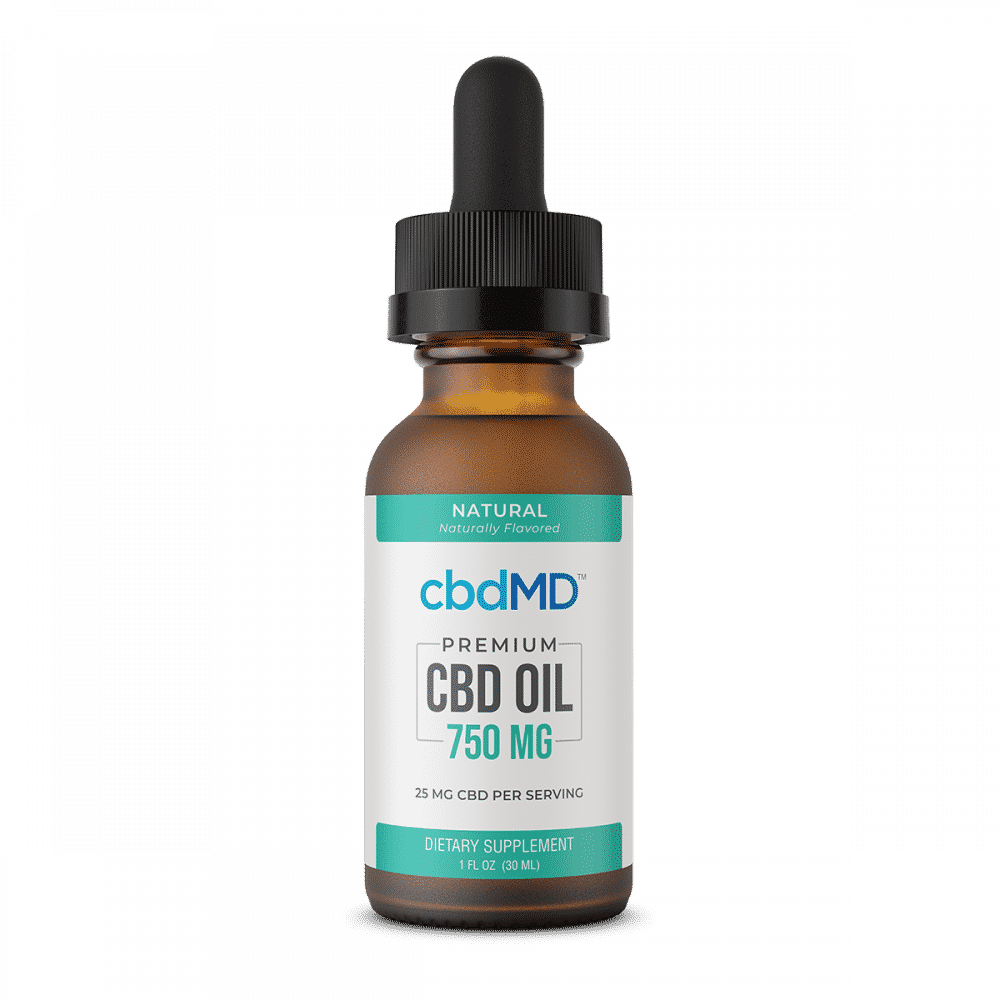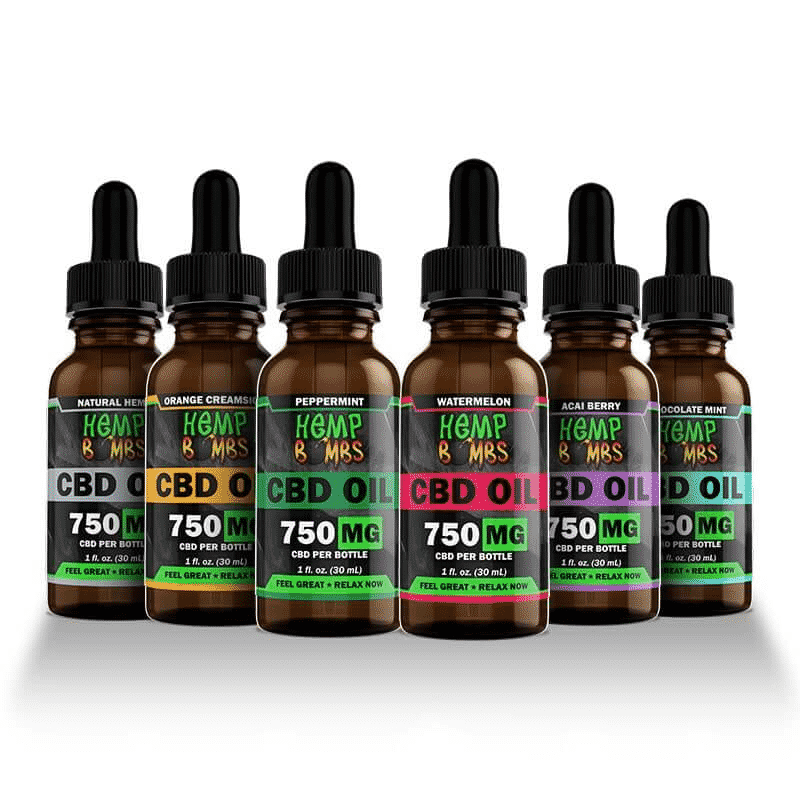Best CBD Oil for Migraines
If you have tried just about every standard over-the-counter painkiller for migraines without much effect, you might want to consider using cannabidiol (CBD) oil for relief. Below are some of the best CBD oil products that we recommend to relieve your headaches and the pain associated with migraines.
Best CBD Oil for Migraines 2025
- Spruce 750mg Lab Grade CBD Oil Editor's Pick
- NuLeaf Naturals 900mg Full Spectrum Hemp CBD Oil Best Organic
- Spruce 2400mg Lab Grade CBD Oil Editor's Pick
- Avida Full Spectrum CBD Oil Tincture 500mg Best Seller
- cbdMD CBD Oil Tincture Natural 1500mg Best Natural Alternative
- CBDistillery THC Free CBD Oil Tinctures Best THC-Free
- cbdMD CBD Oil Tincture Natural 750mg Best Customer Rated
- NuLeaf Naturals 300mg Full Spectrum Hemp CBD Oil Best Starter
- Hemp Bombs 750mg CBD Oil Best Flavor Range
Compare the best CBD Oil for Migraines 2021
Best CBD Oil for Migraines
1. Spruce 750mg Lab Grade CBD Oil
cbdc overall score
4.8
CBDC Evaluation Table/Score
| Pros | Cons |
|---|---|
|
Mid-strength |
No other flavors |
|
Natural peppermint flavor |
|
|
Made from 100% organic and natural ingredients |
Overview
Each bottle of the 750mg CBD oil tincture contains 25mg of CBD per dropper full. The oil is peppermint flavor to mask any unpleasant tastes related to CBD.
2. NuLeaf Naturals 900mg Full Spectrum Hemp CBD Oil
cbdc overall score
5.0
CBDC Evaluation Table/Score
| Pros | Cons |
|---|---|
|
Pure CBD hemp |
No other flavors |
|
All natural |
|
|
Approximately 300 drops total |
Overview
Natural remedy for various illnesses. NuLeaf Naturals’ CBD oil is a whole-plant extract containing a full spectrum of naturally occurring synergistic cannabinoids and terpenes.
3. Spruce 2400mg Lab Grade CBD Oil
cbdc overall score
5.0
CBDC Evaluation Table/Score
| Pros | Cons |
|---|---|
|
Extra Strength |
Tastes bitter |
|
No artificial flavoring or colors |
No THC-free option |
|
Made from 100% organic and natural ingredients |
Overview
The largest bottle of CBD oil that Spruce offers contains 2,400mg of CBD. This is full-spectrum CBD oil, which is the maximum possible potency. Each high potency dropper full contains 80mg of CBD. There are no flavorings in it, which allows for the most CBD to fit in the 30ml bottle.
4. Avida Full Spectrum CBD Oil Tincture 500mg
cbdc overall score
4.6
CBDC Evaluation Table/Score
| Pros | Cons |
|---|---|
|
Light Spearmint flavor |
No other flavor |
|
Non-THC, Non-detected in drug test |
Overview
Avida Extracts Full Spectrum CBD oil is the latest iteration of the brand’s advanced Avida CORE Spectrum technology. They use a proprietary full spectrum blend, resulting in the highest naturally occurring Phyto-cannabinoids and Terpenes with THC (<0.3) to support your health.
5. cbdMD CBD Oil Tincture Natural 1500mg
cbdc overall score
4.7
CBDC Evaluation Table/Score
| Pros | Cons |
|---|---|
|
Various delicious flavors to choose from |
cbdMD uses MCT as its carrier oil so individuals who are allergic with coconuts should consider other brand options |
|
Has vegan, organic, and gluten-free ingredients |
|
|
Free shipping for this particular product within USA |
|
|
World-class customer service team |
Overview
cbdMD’s CBD oil tinctures are made using only CBD sourced from medical hemp and MCT oil as a carrier oil. Tinctures are offered in orange, mint, natural, and berry flavors. Safe for daily use, the oil tinctures are packaged with a built-in rubber dropper to adjust CBD dosage easily. The packaging is made to be easy to transport and discreet to use.
6. CBDistillery THC Free CBD Oil Tinctures
cbdc overall score
4.4
CBDC Evaluation Table/Score
| Pros | Cons |
|---|---|
|
60-Day Satisfaction Guarantee |
Dropper is a bit shaky |
|
Various strengths |
|
|
Oil extracted from aerial plant parts of US grown industrial hemp |
|
|
Sourced from non-GMO industrial hemp grown in the USA through natural farming practices |
Overview
CBDistillery’s Isolate CBD Oil Tinctures harness the power of pure CBD. CBD Isolate Oil Tinctures include 0.0% THC. When you use CBDistillery CBD Isolate Oil Tinctures, you can be assured you’re using the highest quality CBD on the market.
7. NuLeaf Naturals 300mg Full Spectrum Hemp CBD Oil
cbdc overall score
4.6
CBDC Evaluation Table/Score
| Pros | Cons |
|---|---|
|
Pure CBD hemp |
No other flavors |
|
All natural |
A bit pricey compared to competitors |
|
Approximately 100 drops total |
Overview
This is one of several concentrations from NuLeaf Naturals. As the lowest concentration, it is the company’s best option for those new to CBD oil. The product is lab-tested and fully organic. It is full-spectrum, so it contains THC in small quantities.
8. cbdMD CBD Oil Tincture Natural 750mg
cbdc overall score
4.4
CBDC Evaluation Table/Score
| Pros | Cons |
|---|---|
|
Vegan and Gluten free |
Does not ship internationally |
|
Has a third-party lab test |
|
|
Wide variety of CBD strengths and sizes |
Overview
A 750mg bottle of cbdMD’s Broad Spectrum Oil Tincture does not contain THC. It also has a fairly wide flavor range which is perfect for those who prefer other taste. Vegan consumers are considered since cbdMD offers Vegan products. Aside from all of that, another reason why people love cbdMD is because it’s free from harmful chemicals.
9. Hemp Bombs 750mg CBD Oil
cbdc overall score
3.9
CBDC Evaluation Table/Score
| Pros | Cons |
|---|---|
|
Wide variety of flavors |
Incomplete information about the product |
|
Lab test results are complete |
Does not ship to all international countries |
|
30-day money-back guarantee |
Overview
Hemp Bombs offer CBD Oil Tinctures that come in a 30ml bottle containing 750mg of CBD. They provide a wide range of flavors perfect for those that have a knack for sweets. Consumers can safely intake this because it’s free of chemicals and pesticides. Hemp Bombs also offer a 20% off on products upon subscription.
How CBD Works for Migraines
CBD interacts with the human body’s endocannabinoid system (ECS) to help regulate pain sensations. The ECS maintains the body’s equilibrium and keeps balance in several bodily functions, such as mood, appetite, metabolism, anxiety, memory, sleep, and immune response.
A 2018 study noted that migraine and several mental state disruptions are connected to disturbances to the functionality or supply of endocannabinoids(1). A separate study reported that cannabinoids, such as CBD and THC (tetrahydrocannabinol), may help reduce neuropathic, acute, and chronic pain(2). Cannabinoids are compounds that occur naturally in Cannabis sativa plants.
The ECS contains cannabinoid receptors located in different parts of the body, mainly distributed throughout general pain sensation pathways(3). These pain pathways are mostly found in the peripheral nervous system (PNS) and the central nervous system (CNS).
CBD and other cannabinoids, both natural and synthetic, bind to the endocannabinoid receptors, which affects the body’s functionality.
CB1 and CB2 are the primary types of cannabinoid receptors associated with the ECS.
CB1 receptors are associated with cognitive functions(4). These include movement, emotion, mood, thinking, memories, pain, and appetite. Meanwhile, CB2 receptors are associated with pain and inflammation(5).
Although cannabinoid receptors are found throughout the body, certain types tend to be concentrated in one area more than others. For instance, CB1 receptors are abundant in the brain, making them a potential target for treating migraines(6).
Meanwhile, CB2 receptors are prevalent in the immune system(7). These receptors have potential anti-inflammatory properties and represent an alternative response to migraine(8).
CB1 and CB2 receptors also interact with anandamide, a naturally occurring cannabinoid in the body(9). In 2011, researchers collected data from an animal model and examined the effects of anandamide on migraine. The authors’ study is published in the Journal of Headache and Pain(10).
Upon combining their data with related literature, the researchers hypothesized that a dysfunction in the endocannabinoid system potentially contributes to the development of migraine attacks.
The same study suggested that the pharmacological modulation of CB1 and CB2 receptors may be useful in treating chronic migraine pain.
Meanwhile, a 2017 study presented evidence that migraine sufferers have anandamide deficiency(11). The study’s researchers noted that migraine is not associated with a generalized anandamide deficiency. Instead, they attributed migraine to a localized deficiency.
How CBD Works for Tension Headaches and Cluster Headaches
In chronic tension headaches and cluster headaches, existing research focuses on assessing massage therapy effects in alleviating pain from these conditions. Tension headaches occur when the scalp and neck muscles contract and become tense. Meanwhile, cluster headaches are one-sided head pains that occur in cyclical patterns or “cluster periods.”
In a 2002 study with human subjects, researchers provided structured massage therapy treatment to patients(12). Massage therapy targeted the patients’ neck and shoulder muscles.
Although the results did not yield any positive effects on headache intensity, researchers noted that the duration of headaches decreased during massage periods.
As such, the researchers stated that muscle-specific massage therapy might help reduce chronic tension headaches.
CBD products come in transdermal options, which you can apply directly to your skin. When applied topically, they may have some potential benefits in relieving pain and inflammation.
There is no substantial evidence to support CBD oil’s benefits in treating tension headaches. However, coupling CBD oil products with massage therapy may increase the migraine relief offered by both treatment options compared to when used separately.
Benefits of Using CBD for Migraines
Several studies have backed CBD’s purported benefits in relieving migraine symptoms, including headaches, vomiting, nausea, inflammation, and general pain. Moreover, the World Health Organization (WHO) showed approval for CBD, saying that it is “generally well-tolerated with a good safety profile(13).”
Patients considering taking CBD to treat their migraines may rest assured that the substance is not habit-forming. During a 2015 conference, Nora Volkow, MD, the director of the National Institute on Drug Abuse (NIDA), stated that CBD does not produce euphoria, intoxication, or addiction, unlike opioid medication(14).
CBD has shown promise in relieving pain associated with migraines. According to Dr. Stephen Silberstein of the American Migraine Foundation and director of the Headache Center at Jefferson University Hospital in Philadelphia, CBD topicals are a viable option for patients who experience joint and muscle pain linked to migraines(15).
Dr. Silberstein stated that taking CBD oil is reasonable among patients who experience a lot of neck pain or soreness. He also said that CBD oil may prevent vomiting and nausea. Some studies support Dr. Silberstein’s claims about CBD’s antiemetic properties.
In 2019, a study in the British Journal of Pharmacology cited significant evidence that manipulating the endocannabinoid system regulates vomiting and nausea among humans and animals capable of vomiting in response to a toxic challenge(16).
According to the study, preclinical research indicated that CBD and other cannabinoids are potentially useful in treating both vomiting and nausea caused by treatments, such as chemotherapy.
Meanwhile, a 2013 review in the European Journal of Pharmacology discusses the potential of utilizing cannabinoids in the regulation and treatment of debilitating conditions, specifically vomiting and nausea(17).
The National Headache Foundation has also estimated that nearly 40 million people, or 12% of the United States population, are experiencing migraines(18).
The organization further explains that the pain from migraine headaches results from signals interacting with blood vessels and the nerves surrounding the brain. Blood vessel nerves are activated when you experience a headache. This occurrence also results in the nerves sending pain signals to the brain.
The pain results from the swelling of blood vessels surrounding the nerve endings. This occurrence happens when overactive nerve cells send impulses to the blood vessels, causing the release of substances, including serotonin and prostaglandins.
Serotonin is a body chemical required by nerve cells and the brain to function, while prostaglandins are lipids that regulate blood flow and inflammation.
In 2005, researchers studied migraine as an inflammatory disorder(19). CBD allegedly possesses anti-inflammatory properties, which can help with migraines related to inflammation.
The 2005 study published in the Neurology journal of the American Academy of Neurology explained that migraine is not usually associated with heat, redness, and swelling. As such, migraines are not traditionally classified as an inflammatory disease.
Years after, a 2017 study published in the Physiological Reviews journal of the American Physiological Society showed that intense sensory nerve stimulation might be partially responsible for the pain from migraine headaches. Inflammatory agents during a migraine attack cause this stimulation(20).
Some studies support the purported anti-inflammatory properties of CBD. In particular, a 2018 study published in the Journal of Pharmacology and Experimental Therapeutics highlighted CBD’s potent anti-inflammatory properties(21).
Meanwhile, a 2012 study noted how CBD inhibited neuropathic and inflammatory pain by targeting glycine receptors(22). Glycine is an inhibitory neurotransmitter involved in the processing of motor and sensory information that allows movement, vision, and audition.
The study’s findings suggest that glycine assists cannabinoids in the suppression of chronic pain.
Although studies have documented CBD’s potential as an analgesic, CBD requires more longitudinal analysis to substantiate its purported benefits as a pain reliever against migraines.
Risks of Using CBD for Migraines
CBD oil companies marketing their products as dietary supplements or medicine for any condition is prohibited, according to the United States Food and Drug Administration (FDA)(23). The FDA is responsible for ensuring the safety, efficacy, and security of drugs for human and animal patients to protect public health(24).
There is a lack of evidence on CBD as a viable treatment for migraines or other debilitating conditions, aside from the treatment of seizures associated with Lennox-Gastaut syndrome or Dravet syndrome in children over the age of one.
The FDA has approved Epidiolex as a CBD treatment for children who experience seizures caused by rare and severe forms of epilepsy only. Epidiolex is the first FDA-approved narcotic that contains a pure, marijuana-derived drug substance(25).
In terms of migraine treatment, researchers in 2017 conducted a review of related literature and noted a potentially useful role for medical cannabis in treating migraine. Unlike CBD products, medical cannabis may exceed the federally legal amount of 0.3% THC on a dry weight basis.
The review of studies is published in the Cannabis and Cannabinoid Research journal(26).
Despite the collection of studies centering on the potential of medical cannabis in treating migraines, there is a lack of structured experiments on using CBD oil specifically for migraines.
In addition to the lack of CBD-specific research, migraine patients have different responses to existing modes of treatment(27). The complex nature of migraines challenges researchers to define the exact criteria for future clinical assessments.
Although CBD has a good safety profile according to the WHO, CBD usage has shown potential side effects. Some of which include dry mouth, liver damage, changes in alertness, loss of appetite, gastrointestinal problems, mood swings, drowsiness, diarrhea, and fatigue(28).
A 2017 research noted CBD’s potential to interact with other drugs that people with migraines may already be taking. Potential interactions with prescription medications may alter the body’s capacity to metabolize certain medications(29).
Before turning to CBD to treat your migraine, you should also beware of getting scammed by unreliable CBD brands. Unlike some of the best CBD oil for migraines we have listed here, a 2017 review exposed inaccurate labeling in some CBD products.
Upon conducting laboratory analyses, the researchers noted that some product labels listed CBD contents that exceeded the actual amounts(30).
Other risks include the presence of pesticides or other harmful substances. This finding highlights the need for CBD brands to be transparent with their CBD products’ third-party lab tests, including the item’s manufacturing processes to prove that it is pesticide– or GMO-free.
With these precautions, you can rest assured that you are investing in quality products.
How Soon Can CBD’s Effects in Migraines Be Felt?
Individuals with migraine may turn to CBD oil as a natural alternative to the over-the-counter (OTC) drugs they take to relieve headaches. However, currently, there is no substantial evidence of CBD as a migraine treatment.
Paracetamol, ibuprofen, and aspirin are common OTC painkillers and pharmaceuticals that reduce migraine symptoms. Meanwhile, you may seek a doctor’s recommendation to use triptans, which were developed specifically to treat acute migraine headaches (31).
Paracetamol may need up to an hour upon ingestion to take effect(32). Meanwhile, the time it takes for CBD to take effect may depend on the application method of your preferred CBD product format. There are multiple ways to use CBD oil for migraines.
CBD oil products may come in tincture (dropper) form, which patients can take sublingually. This method involves applying CBD oil under the tongue and waiting for about 90 seconds before swallowing the product.
The body absorbs CBD through the mucous membranes, so CBD avoids passing through the liver(33).
Sublingual administration of CBD oil may take between 30 minutes to an hour before the user feels its effects. Once CBD takes effect after 60 minutes, you may continue to feel the results up to four to six hours after administration.
A 2010 study showed that peak blood levels, or the highest concentration of drugs in your bloodstream, of most substances taken sublingually are achieved within 10 to 15 minutes. Additionally, the sublingual application allows the body to absorb a more significant percentage of the dose compared to oral ingestion(34).
Other ingestible forms of CBD include edibles, gummies, pills, and capsules. CBD food and drink products also come in different flavors, which people might prefer over the natural, earthy flavor of pure CBD oil.
A study noted that CBD remained in effect three to four hours after CBD was taken in capsule form(35).
In 2018, authors of a study published in the Frontiers in Pharmacology journal suggested that consuming CBD orally after meals allows for more efficient absorption of the compound(36). They hypothesized that CBD’s highly lipophilic nature (state of being soluble in fats or lipids) enables it to be easily dissolved in food’s fat content.
While such methods may be convenient for migraine patients turning to CBD for the first time, ingestible formats may take longer for patients to feel the purported pain relief effects of CBD as the body must digest the compound first.
CBD oil products also come in vape form, which you can inhale to avoid having the product go through the digestive system. Vaping may be the fastest method to get CBD into the body as the product enters the bloodstream through the lungs.
However, individuals who are considering vape for the first time must consult with a medical practitioner first. Vaping poses possible health issues, including chemical irritation or allergic reactions to various substances in the inhaled products(37).
Meanwhile, topical CBD exists in the forms of lotions, salves, creams, transdermal patches, or massage oil. Topical administration of CBD is ideal for the effective treatment of inflammation in a specific body area. You can apply topicals directly to your painful body parts during a migraine attack.
Transdermal CBD with proper formulation may work instantly upon application, relieving patients of their pain within 15 minutes(38). CBD topicals target localized cannabinoid clusters through the skin, meaning it does not have to interact with the ECS as a whole.
A 2016 study using a rat model noted the positive effects of CBD’s transdermal application in reducing inflammation and pain-related behaviors of arthritis(39).
Some CBD brands may claim that their CBD products’ effects last up to 12 hours, which is questionable because of the current lack of longitudinal clinical trials to support CBD’s effects.
What Is the Dosage for Migraines?
Currently, there is no official recommended CBD dosing for migraines, high blood pressure, or any medical condition. Doctors with experience in cannabis use may offer medical advice and recommend that patients start with low doses to get the body acclimated to the substance slowly.
Users may then gradually increase their dosage until they experience the desired results. Still, determining the appropriate amount of CBD to take for migraines might be a trial-and-error process.
Other factors affecting CBD dosage may include the frequency of migraine attacks, the severity of migraine symptoms, age, and body chemistry. The CBD format may also affect the dosage.
For example, gummies or capsules may be easier to ingest as CBD comes in pre-measured doses. In contrast, CBD oil tinctures usually come with a dropper, which people can use to adjust the amount they intend to take.
Patients who live in a state where CBD products are legally available as OTC drugs in licensed dispensaries may look at the instructions listed on a CBD product’s label.
CBD manufacturers and brands are likely to have guidelines for doses printed on the product label, the accompanying paperwork, or the brand’s website.
Legality of CBD
Only 47 out of the 50 states in the USA (United States of America) have allowed the federally legal use of CBD with varying degrees of regulation per state(40). Per federal laws, people may travel through the states with CBD, granted that the state they are coming from and traveling to have placed similar policies on CBD usage.
CBD’s legality in the US is typically associated with the Agriculture Improvement Act of 2018 or the 2018 Farm Bill(41). This law declassified hemp plants as marijuana plants, thus removing them from the Schedule I category of the 1970 Federal Controlled Substances Act(42).
Before the 2018 Farm Bill’s passage, both hemp and marijuana plants belonged under the Schedule I drugs category, which consists of potentially addictive or abusive substances without any accepted health benefits.
The 2018 Farm Bill redefined hemp plants as cannabis plant varieties that contain less than 0.3% THC on a dry weight basis, while marijuana plants contain more THC than the established limit. CBD and THC may come from cannabis plant species, like Cannabis sativa.
Apart from the redefinition of hemp-based on its THC content, the 2018 Farm Bill granted the FDA permission to regulate CBD’s circulation on the market(43). The agency reserves the right to penalize CBD companies that make unproven claims about the health benefits of CBD products.
CBD and THC are the most abundant cannabinoids in cannabis plants, meaning both compounds are present in both hemp and marijuana. The difference in THC concentrations implies that CBD oil from hemp does not have psychoactive effects.
THC’s psychoactive properties make people experience euphoria or get them high. Thus, this phenomenon plays a significant role in the legality of CBD products.
CBD oil within the legal limit of 0.3% THC does not produce a high in users and allows them to get the purported benefits of cannabis plants.
Since marijuana contains more than 0.3% THC, it remains in the Schedule I category of drugs with a high potential for abuse(44). For this reason, CBD oil derived from marijuana plants is federally illegal in the US.
Only qualified patients with certifications from licensed healthcare providers may purchase CBD oil that exceeds the federal THC limit. These patients may apply for a medical marijuana card, which has varying qualifications depending on the state of their residence.
Despite federal laws, US states have their local laws on CBD and marijuana use.
While the 2018 Farm Bill removed legal restrictions on owning hemp-derived CBD products, local laws may supersede federal regulations since the state is the primary enforcement authority for drug-related offenses(45).
Product Frequently
Asked Questions
-
How can CBD help with migraines?
CBD has several purported pain-relieving properties. Migraine patients may take CBD to help in regulating pain and inflammation(46). These conditions may be associated with severe migraines.
-
Does CBD oil help with tension headaches?
As of writing, there is no substantial evidence to support CBD oil’s benefits in treating tension headaches. However, you may couple CBD oil products with massage therapy to explore if these treatments can provide migraine relief.
-
Is there evidence that CBD helps with migraines?
No research specifically links CBD to migraine relief. Existing studies only hypothesize CBD’s potential to treat migraines since the cannabinoid binds to the receptors that regulate pain and inflammation in the body(47).
Currently, there is insufficient conclusive scientific evidence that explicitly focuses on CBD’s purported medical properties in treating pain linked to migraines.
-
Is there any evidence that CBD can worsen migraines?
CBD has a good safety profile(48). However, nausea is among the potential side effects of CBD usage(49). Nausea and emesis are some symptoms linked to migraines.
-
Does CBD interact with any medication that I might be taking for migraines?
There is no specific evidence that studies the interaction between CBD and migraine medication, such as triptans.
Still, potential drug interactions with antidepressants and other medications that may lead to adverse effects are included in the risks of using CBD oil(50).
-
Are there other treatments I should consider alongside CBD to help with migraines?
Patients who suffer from migraines may consider massage therapy using CBD oil. A 2002 study noted decreased headaches in human subjects upon undergoing structured massage therapy treatment(51).
There is no longitudinal research on the combined effects of massage therapy and CBD. Still, topical CBD products’ potential in relieving migraines exists as CBD showed promise in alleviating pain and inflammation(52).
-
Can I fail a drug test if I use CBD for migraines?
People who take CBD for migraines may only fail a drug test if the CBD products they use contain more THC than the approved limit of 0.3%. Unlike THC, CBD does not show up on a drug test.
Note that while the allowed THC content is less than 0.3%, the volume may accumulate with frequent use, enough to be detected on a drug test(53). Thus, you should be cautious of taking CBD products with THC if you know of upcoming drug tests.
-
Can CBD oil get me high?
CBD does not contain any euphoric or intoxicating properties, according to the National Institute on Drug Abuse Director Nora Volkow, MD(54). Patients who take CBD oil products do not get high, unlike when using marijuana products rich in THC.
Full-spectrum CBD oil products contain trace amounts of THC along with the naturally occurring components of industrial hemp plants, such as terpenes, flavonoids, and fatty acids. However, the amount of THC is not enough to get you high.
-
How long should I use CBD oil for migraines?
There is no officially recognized CBD dosage for the treatment of migraines. Until more longitudinal research uncovers CBD’s impact on migraines, you should proceed with caution before taking any CBD product.
-
Where is the hemp for CBD sourced from?
Industrial hemp plants are usually sourced from Colorado farms. Hemp plants undergo CO2 extraction methods to obtain CBD from the plants.
-
What is the dosage for migraines?
There are no official dosage guidelines for CBD use in migraines. You can start with small amounts of CBD. If no adverse effects are observed, the dosage may be increased gradually.
- Leimuranta, P., Khiroug, L., & Giniatullin, R. (2018). Emerging Role of (Endo)Cannabinoids in Migraine. Frontiers in pharmacology, 9, 420. https://doi.org/10.3389/fphar.2018.00420
- Rahn, E.J.; Hohmann, A.G. Cannabinoids as Pharmacotherapies for Neuropathic Pain: From the Bench to the Bedside. Neurotherapeutics 2009, 6, 713–737; Pertwee R. G. (2001). Cannabinoid receptors and pain. Progress in neurobiology, 63(5), 569–611. https://doi.org/10.1016/s0301-0082(00)00031-9
- Yam, M. F., Loh, Y. C., Tan, C. S., Khadijah Adam, S., Abdul Manan, N., & Basir, R. (2018). General Pathways of Pain Sensation and the Major Neurotransmitters Involved in Pain Regulation. International journal of molecular sciences, 19(8), 2164. https://doi.org/10.3390/ijms19082164
- Fine, P. G., & Rosenfeld, M. J. (2013). The endocannabinoid system, cannabinoids, and pain. Rambam Maimonides medical journal, 4(4), e0022. https://doi.org/10.5041/RMMJ.10129
- Manzanares, J., Julian, M. D., & Carrascosa, A. (2006). Role of the cannabinoid system in pain control and therapeutic implications for the management of acute and chronic pain episodes. Current neuropharmacology, 4(3), 239-257.
- Leimuranta, P., Khiroug, L., & Giniatullin, R. (2018). Emerging Role of (Endo)Cannabinoids in Migraine. Frontiers in pharmacology, 9, 420. https://doi.org/10.3389/fphar.2018.00420
- Gabral, G. A., Rogers, T. J., and Lichtman, A. H. (2015). Turning over a new leaf: cannabinoid and endocannabinoid modulation of immune function. J. Neuroimmune Pharmacol. 10, 193–203. doi: 10.1007/s11481-015-9615-z; Scherma, M., Muntoni, A. L., Melis, M., Fattore, L., Fadda, P., Fratta, W., et al. (2016). Interactions between the endocannabinoid and nicotinic cholinergic systems: preclinical evidence and therapeutic perspectives. Psychopharmacology 233, 1765–1777. doi: 10.1007/s00213-015-4196-3
- Scherma, M., Muntoni, A. L., Melis, M., Fattore, L., Fadda, P., Fratta, W., et al. (2016). Interactions between the endocannabinoid and nicotinic cholinergic systems: preclinical evidence and therapeutic perspectives. Psychopharmacology 233, 1765–1777. doi: 10.1007/s00213-015-4196-3
- Van der Kloot W. (1994). Anandamide, a naturally-occurring agonist of the cannabinoid receptor, blocks adenylate cyclase at the frog neuromuscular junction. Brain research, 649(1-2), 181–184. https://doi.org/10.1016/0006-8993(94)91062-6
- Greco, R., Mangione, A. S., Sandrini, G., Maccarrone, M., Nappi, G., & Tassorelli, C. (2011). Effects of anandamide in migraine: data from an animal model. The journal of headache and pain, 12(2), 177–183. https://doi.org/10.1007/s10194-010-0274-4
- Gouveia-Figueira, S., Goldin, K., Hashemian, S. A., Lindberg, A., Persson, M., Nording, M. L., Laurell, K., & Fowler, C. J. (2017). Plasma levels of the endocannabinoid anandamide, related N-acylethanolamines and linoleic acid-derived oxylipins in patients with migraine. Prostaglandins, leukotrienes, and essential fatty acids, 120, 15–24. https://doi.org/10.1016/j.plefa.2017.04.005
- Quinn C, Chandler C, Moraska A. Massage therapy and frequency of chronic tension headaches. Am J Public Health. 2002;92(10):1657-1661. doi:10.2105/ajph.92.10.1657
- O. Expert Committee on Drug Dependence. (2017, Nov 6-10). Cannabidiol (CBD). Retrieved from https://www.who.int/medicines/access/controlled-substances/5.2_CBD.pdf
- Statement of Nora Volkow, M.D. National Institutes of Health. 2020 January 15. Retrieved from https://docs.house.gov/meetings/IF/IF14/20200115/110381/HHRG-116-IF14-Wstate-VolkowN-20200115.pdf
- American Migraine Foundation. (2018, Dec 7). Migraine and CBD Oil. Retrieved from https://americanmigrainefoundation.org/resource-library/migraine-cbd-oil/
- Parker, L. A., Rock, E. M., & Limebeer, C. L. (2011). Regulation of nausea and vomiting by cannabinoids. British journal of pharmacology, 163(7), 1411–1422. https://doi.org/10.1111/j.1476-5381.2010.01176.x
- Sharkey, K. A., Darmani, N. A., & Parker, L. A. (2014). Regulation of nausea and vomiting by cannabinoids and the endocannabinoid system. European journal of pharmacology, 722, 134–146. https://doi.org/10.1016/j.ejphar.2013.09.068
- Cleveland Clinic. (2018, Aug 7). Migraine Headaches. Retrieved from https://my.clevelandclinic.org/health/diseases/5005-migraine-headaches
- Christian Waeber, Michael A. Moskowitz. (2005, May). Migraine as an inflammatory disorder. Neurology, 64 (10 suppl 2) S9-S15; DOI: 10.1212/WNL.64.10_suppl_2.S9. Retrieved from https://n.neurology.org/content/64/10_suppl_2/S9
- Goadsby, P. J., Holland, P. R., Martins-Oliveira, M., Hoffmann, J., Schankin, C., & Akerman, S. (2017). Pathophysiology of Migraine: A Disorder of Sensory Processing. Physiological reviews, 97(2), 553–622. https://doi.org/10.1152/physrev.00034.2015
- Petrosino S et al. Anti-inflammatory Properties of Cannabidiol, a Nonpsychotropic Cannabinoid, in Experimental Allergic Contact Dermatitis. Journal of Pharmacology and Experimental Therapeutics June 2018, 365 (3) 652-663; DOI: https://doi.org/10.1124/jpet.117.244368
- Xiong W, Cui T, Cheng K, et al. Cannabinoids suppress inflammatory and neuropathic pain by targeting α3 glycine receptors. J Exp Med. 2012;209(6):1121–1134. doi:10.1084/jem.20120242
- FDA Regulation of Cannabis and Cannabis-Derived Products, Including Cannabidiol (CBD). U.S. Food & Drug Administration. 2020 October 1. Retrieved from https://www.fda.gov/news-events/public-health-focus/fda-regulation-cannabis-and-cannabis-derived-products-including-cannabidiol-cbd
- What We Do. U.S. Food & Drug Administration. 2018 March 28. Retrieved from https://www.fda.gov/about-fda/what-we-do
- FDA Approves First Drug Comprised of an Active Ingredient Derived from Marijuana to Treat Rare, Severe Forms of Epilepsy. U.S. Food & Drug Administration. 2020 March 27. Retrieved from https://www.fda.gov/news-events/press-announcements/fda-approves-first-drug-comprised-active-ingredient-derived-marijuana-treat-rare-severe-forms
- Lochte, B. C., Beletsky, A., Samuel, N. K., & Grant, I. (2017). The Use of Cannabis for Headache Disorders. Cannabis and cannabinoid research, 2(1), 61–71. https://doi.org/10.1089/can.2016.0033
- Leimuranta, P., Khiroug, L., & Giniatullin, R. (2018). Emerging Role of (Endo)Cannabinoids in Migraine. Frontiers in pharmacology, 9, 420. https://doi.org/10.3389/fphar.2018.00420
- Bauer, B. (2018, Dec 20). What are the benefits of CBD — and is it safe to use? Retrieved from https://www.mayoclinic.org/healthy-lifestyle/consumer-health/expert-answers/is-cbd-safe-and-effective/faq-20446700.Iffland, K., & Grotenhermen, F. (2017). An Update on Safety and Side Effects of Cannabidiol: A Review of Clinical Data and Relevant Animal Studies. Cannabis and cannabinoid research, 2(1), 139–154. https://doi.org/10.1089/can.2016.0034
- Iffland, K., & Grotenhermen, F. (2017). An Update on Safety and Side Effects of Cannabidiol: A Review of Clinical Data and Relevant Animal Studies. Cannabis and cannabinoid research, 2(1), 139–154. https://doi.org/10.1089/can.2016.0034
- Bonn-Miller, M. O., Loflin, M., Thomas, B. F., Marcu, J. P., Hyke, T., & Vandrey, R. (2017). Labeling Accuracy of Cannabidiol Extracts Sold Online. JAMA, 318(17), 1708–1709. https://doi.org/10.1001/jama.2017.11909
- Rothrock, John F.Oral Triptan Therapy. American Migraine Foundation. 2006 June 2. Retrieved from https://americanmigrainefoundation.org/resource-library/oral-triptan-therapy/
- Paracetamol for adults. NHS. 2019 May 23. Retrieved from https://www.nhs.uk/medicines/paracetamol-for-adults
- Huestis, M. A. (2007). Human cannabinoid pharmacokinetics. Chemistry & biodiversity, 4(8), 1770.
- Narang N, Sharma J (2010, December 8). Sublingual Mucosa as a Route For System Drug Delivery. Retrieved from: https://innovareacademics.in/journal/ijpps/Vol3Suppl2/1092.pdf.
- Millar, S. A., Stone, N. L., Yates, A. S., & O’Sullivan, S. E. (2018). A Systematic Review on the Pharmacokinetics of Cannabidiol in Humans. Frontiers in pharmacology, 9, 1365. https://doi.org/10.3389/fphar.2018.01365
- Millar SA, Stone NL, Yates AS, O’Sullivan SE. A Systematic Review on the Pharmacokinetics of Cannabidiol in Humans. Front Pharmacol. 2018;9:1365. Published 2018 Nov 26. doi:10.3389/fphar.2018.01365
- Shmerling, R. (2019, Dec 10). Can vaping damage your lungs? What we do (and don’t) know. https://www.health.harvard.edu/blog/can-vaping-damage-your-lungs-what-we-do-and-dont-know-2019090417734
- Taskar, P., Adelli, G., Patil, A., Lakhani, P., Ashour, E., Gul, W., ElSohly, M., & Majumdar, S. (2019). Analog Derivatization of Cannabidiol for Improved Ocular Permeation. Journal of ocular pharmacology and therapeutics : the official journal of the Association for Ocular Pharmacology and Therapeutics, 35(5), 301–310. https://doi.org/10.1089/jop.2018.0141
- Hammell, D. C., Zhang, L. P., Ma, F., Abshire, S. M., McIlwrath, S. L., Stinchcomb, A. L., & Westlund, K. N. (2016). Transdermal cannabidiol reduces inflammation and pain-related behaviours in a rat model of arthritis. European journal of pain (London, England), 20(6), 936–948. https://doi.org/10.1002/ejp.818
- Hemppedia (2019, May 31). Is CBD legal in all 50 states? – The complete 2020 Guide Retrieved from https://hemppedia.org/cbd-oil-legal-us/
- Farm Bill. U.S. Department of Agriculture. Retrieved from https://www.usda.gov/farmbill
- Comprehensive Drug Abuse Prevention and Control Act of 1970. FindLaw. 2019 February 4. Retrieved from https://criminal.findlaw.com/criminal-charges/comprehensive-drug-abuse-prevention-and-control-act-of-1970.htm
- Hudak, John. The Farm Bill, hemp legalization and the status of CBD: An explainer. The Brookings Institution. 2018 December 14. Retrieved from https://www.brookings.edu/blog/fixgov/2018/12/14/the-farm-bill-hemp-and-cbd-explainer/
- FDA Regulation of Cannabis and Cannabis-Derived Products, Including Cannabidiol (CBD). U.S. Food & Drug Administration. 2020 October 1. Retrieved from https://www.fda.gov/news-events/public-health-focus/fda-regulation-cannabis-and-cannabis-derived-products-including-cannabidiol-cbd
- Mead A. (2019). Legal and Regulatory Issues Governing Cannabis and Cannabis-Derived Products in the United States. Frontiers in plant science, 10, 697. https://doi.org/10.3389/fpls.2019.00697
- Rahn, E.J.; Hohmann, A.G. Cannabinoids as Pharmacotherapies for Neuropathic Pain: From the Bench to the Bedside. Neurotherapeutics 2009, 6, 713–737; Pertwee R. G. (2001). Cannabinoid receptors and pain. Progress in neurobiology, 63(5), 569–611. https://doi.org/10.1016/s0301-0082(00)00031-9
- Ibid
- O. Expert Committee on Drug Dependence. (2017, Nov 6-10). Cannabidiol (CBD). Retrieved from https://www.who.int/medicines/access/controlled-substances/5.2_CBD.pdf
- Bauer, B. (2018, Dec 20). What are the benefits of CBD — and is it safe to use? Retrieved from https://www.mayoclinic.org/healthy-lifestyle/consumer-health/expert-answers/is-cbd-safe-and-effective/faq-20446700.Iffland, K., & Grotenhermen, F. (2017). An Update on Safety and Side Effects of Cannabidiol: A Review of Clinical Data and Relevant Animal Studies. Cannabis and cannabinoid research, 2(1), 139–154. https://doi.org/10.1089/can.2016.0034
- Iffland K, Grotenhermen F. An Update on Safety and Side Effects of Cannabidiol: A Review of Clinical Data and Relevant Animal Studies. Cannabis Cannabinoid Res. 2017;2(1):139-154. Published 2017 Jun 1. doi:10.1089/can.2016.0034
- Quinn C, Chandler C, Moraska A. Massage therapy and frequency of chronic tension headaches. Am J Public Health. 2002;92(10):1657-1661. doi:10.2105/ajph.92.10.1657
- Hammell, D. C., Zhang, L. P., Ma, F., Abshire, S. M., McIlwrath, S. L., Stinchcomb, A. L., & Westlund, K. N. (2016). Transdermal cannabidiol reduces inflammation and pain-related behaviours in a rat model of arthritis. European journal of pain (London, England), 20(6), 936–948. https://doi.org/10.1002/ejp.818
- U.S. Food and Drug Administration. (2020, Oct. 1). FDA Regulation of Cannabis and Cannabis-Derived Products, Including Cannabidiol (CBD). Retrieved from https://www.fda.gov/news-events/public-health-focus/fda-regulation-cannabis-and-cannabis-derived-products-including-cannabidiol-cbd
- Statement of Nora Volkow, M.D. National Institutes of Health. 2020 January 15. Retrieved from https://docs.house.gov/meetings/IF/IF14/20200115/110381/HHRG-116-IF14-Wstate-VolkowN-20200115.pdf

